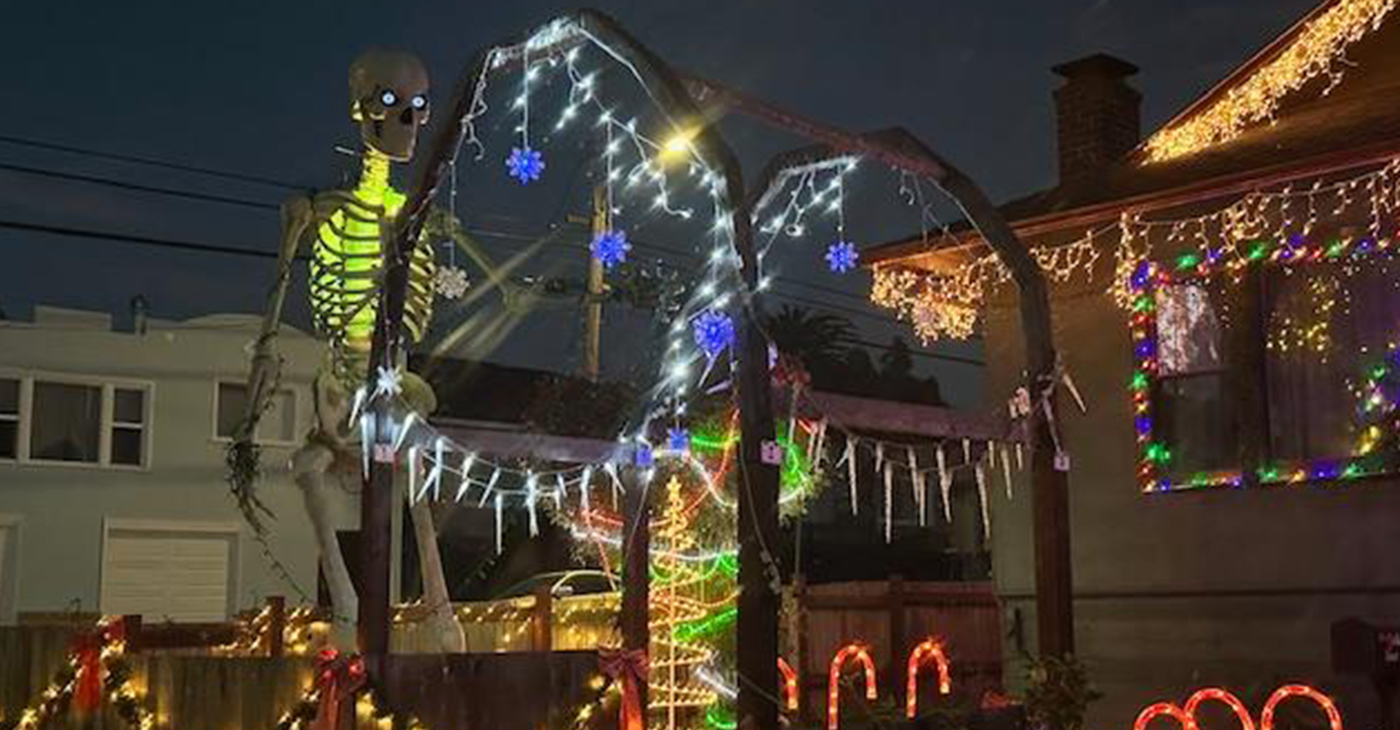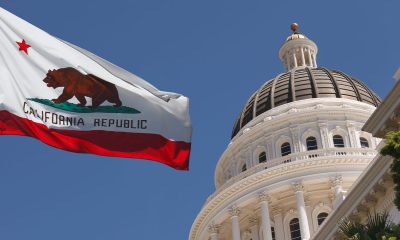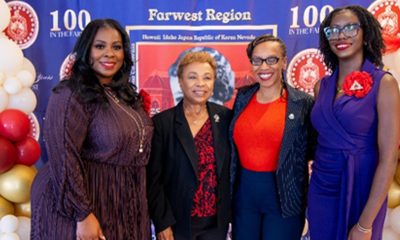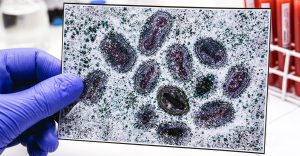Bay Area
COMMENTARY: A Historical Look Back – – Sounds of the Bay Area – Secular and the Sacred
When Southern migrants came to California during the World War II era, they transported their music with them. Music served as a reminder of home; it was like medicine for the soul. The sounds of gospel music found a popular place in the Bay Area.

By Rev. Dr. Martha C. Taylor
The late T-Bone Walker, blues singer, said, “The first time I ever heard a boogie-woogie piano was when I went to church, even the sermon was preached in a blues tone while the congregation yelled amen.” Charlie Yardbird Parker, famous jazz saxophonist frequented the Bay Area during the 40s. Parker once replied to a question about his religious affiliation that he was a devout musician. Even T-Bone Walker’s friends were convinced that he would become a preacher when he stopped singing because of the way he sang the blues. They said it sounded like a sermon. Blues singer Alberta Hunter testified “The blues are like spirituals, almost sacred.”
When Southern migrants came to California during the World War II era, they transported their music with them. Music served as a reminder of home; it was like medicine for the soul. The sounds of gospel music found a popular place in the Bay Area.
Based on traditional choir and quartet singing in southern churches, a cappella gospel music enjoyed an upsurge in popularity as southern black migrants formed new singing groups that toured local communities. Shipyard workers formed gospel groups like the Singing Shipbuilders Quarter (Richmond), Rising Stars Singers (Oakland), and the Paramount Singers (San Francisco).
These two groups, whose members came primarily from Texas and Louisiana, laid the groundwork for later Bay Area gospel groups like the Golden Stars, the Golden West Singers, the Swanee River Singers, the Spartonaires, the Oakland Silvertones, and many others. Church mass choirs began to cut records under the leadership of pastors like G. W. Killens and Carl Anderson.
Opal Nations said Bishop Louis Narcisse sounded like a saved and sanctified blues singer. Blues and gospel music both expressed the struggles of life. Charles Albert Tindley wrote, “I’ll Overcome Someday,” was popular during the Civil Rights era. Betty Reid and her husband Mel Reid opened the first black gospel and blues record store in West Oakland in 1945, Reid’s Records.
Two years later, Mel acquired time on Berkeley’s KRE radio station and broadcast a weekly thirty-minute gospel program called “Religious Gems.” It takes a seasoned saint to remember Reverend George Killens, pastor, Mount Calvary Baptist Church, Oakland, his two-part sermon, “The Cross,” and his congregation singing “Father I Stretch my Hands to Thee,” Mass Choir singing was birthed in the Bay Area.
Some may recall the J. L. Richards Specials and the Voices of Evergreen Baptist Church, a mass choir that broadcast for fifteen minutes on Sunday nights on radio station KWBR and Antioch Baptist Church (featuring the Reverend R. T. George, a master preacher and musician). Sunday night was the time when all ears were tuned into the radio to hear old-fashioned preaching and singing.
“Jumpin” George Oxford was one of the beloved D. J.’s of the 1950s. His focus was on race records, catering to Blacks as did Bouncin’ Bill Doubleday on KWBR and Don Barksdale, former-basketball-star-turned D. J. in the late 1950s. Barksdale was the owner of the Sportsman on Grove Street and the Showcase on Telegraph Avenue, both in Oakland.
Ray Dobard moved from New Orleans to Berkeley during World War II. Dobard established a music publishing business, providing a chance for locals to get their music on “wax” and to a larger audience. Many of Dobard’s fine gospel sides featured King Narcissee, the Golden West Singers, and others.
Jesse Jaxyson moved to West Oakland in the 1930s. A member of the First Church of Religious Science. There he met Clarissa Mayfield, a choir member at his church, and together they set up a radio repair shop at 1606 7th Street, Oakland. He had a room converted into a makeshift recording studio that he ran along with Bob Geddins. Bob Geddins, called the ‘Father of Oakland Blues,’ began pressing records at his West Oakland plant at 8th and Center Streets.”
As we fast forward, it was Edwin and Walter Hawkins, two brothers that completely changed the genre of religious music with the remake of an eighteenth-century song, “Oh Happy Day” featuring Dorothy Morrison and the Edwin Hawkins singers became the first cross over music creating a new contemporary gospel genre. The song created controversy within the church, because it sounded secular.
The Hawkins launched a new sound of gospel music fused with a secular sound paving the way for future artists such as Kirk Franklin, Byron Cage, Fred Hamond, Yolonda Adams and more.
Activism
Oakland Post: Week of December 24 – 30, 2025
The printed Weekly Edition of the Oakland Post: Week of – December 24 – 30, 2025

To enlarge your view of this issue, use the slider, magnifying glass icon or full page icon in the lower right corner of the browser window.
Alameda County
Bling It On: Holiday Lights Brighten Dark Nights All Around the Bay
On the block where I grew up in the 1960s, it was an unwritten agreement among the owners of those row homes to put up holiday lights: around the front window and door, along the porch banister, etc. Some put the Christmas tree in the window, and you could see it through the open slats of the blinds.

By Wanda Ravernell
I have always liked Christmas lights.
From my desk at my front window, I feel a quiet joy when the lights on the house across the street come on just as night falls.
On the block where I grew up in the 1960s, it was an unwritten agreement among the owners of those row homes to put up holiday lights: around the front window and door, along the porch banister, etc. Some put the Christmas tree in the window, and you could see it through the open slats of the blinds.
My father, the renegade of the block, made no effort with lights, so my mother hung a wreath with two bells in the window. Just enough to let you know someone was at home.
Two doors down was a different story. Mr. King, the overachiever of the block, went all out for Christmas: The tree in the window, the lights along the roof and a Santa on his sleigh on the porch roof.
There are a few ‘Mr. Kings’ in my neighborhood.
In particular is the gentleman down the street. For Halloween, they erected a 10-foot skeleton in the yard, placed ‘shrunken heads’ on fence poles, pumpkins on steps and swooping bat wings from the porch roof. They have not held back for Christmas.
The skeleton stayed up this year, this time swathed in lights, as is every other inch of the house front. It is a light show that rivals the one in the old Wanamaker’s department store in Philadelphia.
I would hate to see their light bill…
As the shortest day of the year approaches, make Mr. King’s spirit happy and get out and see the lights in your own neighborhood, shopping plazas and merchant areas.
Here are some places recommended by 510 Families and Johnny FunCheap.
Oakland
Oakland’s Temple Hill Holiday Lights and Gardens is the place to go for a drive-by or a leisurely stroll for a religious holiday experience. Wear a jacket, because it’s chilly outside the Church of Jesus Christ of Latter-day Saints, at 4220 Lincoln Ave., particularly after dark. The gardens are open all day from 9 a.m. to 9 p.m. with the lights on from dusk until closing.
Alameda
Just across the High Street Bridge from Oakland, you’ll find Christmas Tree Lane in Alameda.
On Thompson Avenue between High Street and Fernside drive, displays range from classic trees and blow-ups to a comedic response to the film “The Nightmare Before Christmas.” Lights turn on at dusk and can be seen through the first week in January.
Berkeley
The Fourth Street business district from University Avenue to Virginia Street in Berkeley comes alive with lights beginning at 5 p.m. through Jan. 1, 2026.
There’s also a display at one house at 928 Arlington St., and, for children, the Tilden Park Carousel Winter Wonderland runs through Jan. 4, 2026. Closed Christmas Day. For more information and tickets, call (510) 559-1004.
Richmond
The Sundar Shadi Holiday Display, featuring a recreation of the town of Bethlehem with life-size figures, is open through Dec. 26 at 7501 Moeser Lane in El Cerrito.
Marin County
In Marin, the go-to spot for ‘oohs and ahhs’ is the Holiday Light Spectacular from 4-9 p.m. through Jan. 4, 2026, at Marin Center Fairgrounds at 10 Ave of the Flags in San Rafael through Jan. 4. Displays dazzle, with lighted walkways and activities almost daily. For more info, go to: www.marincounty.gov/departments/cultural-services/department-sponsored-events/holiday-light-spectacular
The arches at Marin County Civic Center at 3501 Civic Center Dr. will also be illuminated nightly.
San Francisco
Look for light installations in Golden Gate Park, chocolate and cheer at Ghirardelli Square, and downtown, the ice rink in Union Square and the holiday tree in Civic Center Plaza are enchanting spots day and night. For neighborhoods, you can’t beat the streets in Noe Valley, Pacific Heights, and Bernal Heights. For glee and over-the-top glitz there’s the Castro, particularly at 68 Castro Street.
Livermore
The winner of the 2024 Great Light Flight award, Deacon Dave has set up his display with a group of creative volunteers at 352 Hillcrest Avenue since 1982. See it through Jan. 1, 2026. For more info, go to https://www.casadelpomba.com
Fremont
Crippsmas Place is a community of over 90 decorated homes with candy canes passed out nightly through Dec. 31. A tradition since 1967, the event features visits by Mr. and Mrs. Claus on Dec. 18 and Dec. 23 and entertainment by the Tri-M Honor Society at 6 p.m. on Dec. 22. Chrippsmas Place is located on: Cripps Place, Asquith Place, Nicolet Court, Wellington Place, Perkins Street, and the stretch of Nicolet Avenue between Gibraltar Drive and Perkins Street.
Alameda County
Oakland Council Expands Citywide Security Cameras Despite Major Opposition
In a 7-1 vote in favor of the contract, with only District 3 Councilmember Carroll Fife voting no, the Council agreed to maintain its existing network of 291 cameras and add 40 new “pan-tilt-zoom cameras.”

By Post Staff
The Oakland City Council this week approved a $2.25 million contract with Flock Safety for a mass surveillance network of hundreds of security cameras to track vehicles in the city.
In a 7-1 vote in favor of the contract, with only District 3 Councilmember Carroll Fife voting no, the Council agreed to maintain its existing network of 291 cameras and add 40 new “pan-tilt-zoom cameras.”
In recent weeks hundreds of local residents have spoken against the camera system, raising concerns that data will be shared with immigration authorities and other federal agencies at a time when mass surveillance is growing across the country with little regard for individual rights.
The Flock network, supported by the Oakland Police Department, has the backing of residents and councilmembers who see it as an important tool to protect public safety.
“This system makes the Department more efficient as it allows for information related to disruptive/violent criminal activities to be captured … and allows for precise and focused enforcement,” OPD wrote in its proposal to City Council.
According to OPD, police made 232 arrests using data from Flock cameras between July 2024 and November of this year.
Based on the data, police say they recovered 68 guns, and utilizing the countywide system, they have found 1,100 stolen vehicles.
However, Flock’s cameras cast a wide net. The company’s cameras in Oakland last month captured license plate numbers and other information from about 1.4 million vehicles.
Speaking at Tuesday’s Council meeting, Fife was critical of her colleagues for signing a contract with a company that has been in the national spotlight for sharing data with federal agencies.
Flock’s cameras – which are automated license plate readers – have been used in tracking people who have had abortions, monitoring protesters, and aiding in deportation roundups.
“I don’t know how we get up and have several press conferences talking about how we are supportive of a sanctuary city status but then use a vendor that has been shown to have a direct relationship with (the U.S.) Border Control,” she said. “It doesn’t make sense to me.”
Several councilmembers who voted in favor of the contract said they supported the deal as long as some safeguards were written into the Council’s resolution.
“We’re not aiming for perfection,” said District 1 Councilmember Zac Unger. “This is not Orwellian facial recognition technology — that’s prohibited in Oakland. The road forward here is to add as many amendments as we can.”
Amendments passed by the Council prohibit OPD from sharing camera data with any other agencies for the purpose of “criminalizing reproductive or gender affirming healthcare” or for federal immigration enforcement. California state law also prohibits the sharing of license plate reader data with the federal government, and because Oakland’s sanctuary city status, OPD is not allowed to cooperate with immigration authorities.
A former member of Oakland’s Privacy Advisory Commission has sued OPD, alleging that it has violated its own rules around data sharing.
So far, OPD has shared Flock data with 50 other law enforcement agencies.
-

 #NNPA BlackPress4 weeks ago
#NNPA BlackPress4 weeks agoLIHEAP Funds Released After Weeks of Delay as States and the District Rush to Protect Households from the Cold
-

 Alameda County4 weeks ago
Alameda County4 weeks agoSeth Curry Makes Impressive Debut with the Golden State Warriors
-

 #NNPA BlackPress4 weeks ago
#NNPA BlackPress4 weeks agoSeven Steps to Help Your Child Build Meaningful Connections
-

 #NNPA BlackPress4 weeks ago
#NNPA BlackPress4 weeks agoSeven Steps to Help Your Child Build Meaningful Connections
-

 #NNPA BlackPress4 weeks ago
#NNPA BlackPress4 weeks agoTrinidad and Tobago – Prime Minister Confirms U.S. Marines Working on Tobago Radar System
-

 #NNPA BlackPress4 weeks ago
#NNPA BlackPress4 weeks agoThanksgiving Celebrated Across the Tri-State
-

 #NNPA BlackPress4 weeks ago
#NNPA BlackPress4 weeks agoTeens Reject Today’s News as Trump Intensifies His Assault on the Press
-

 #NNPA BlackPress4 weeks ago
#NNPA BlackPress4 weeks agoBreaking the Silence: Black Veterans Speak Out on PTSD and the Path to Recovery























































